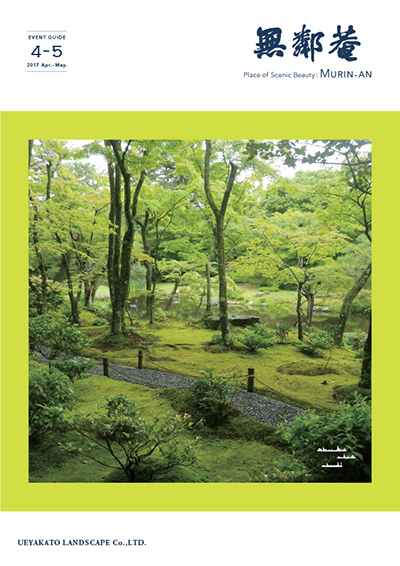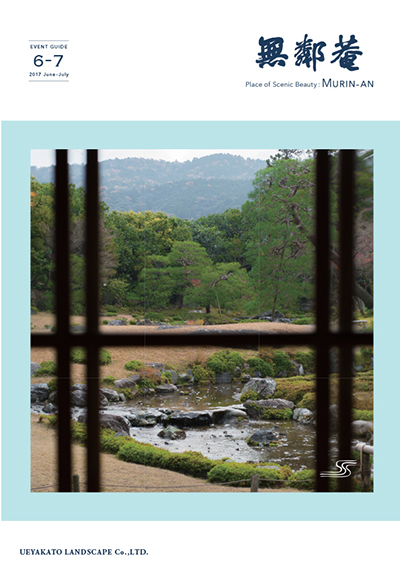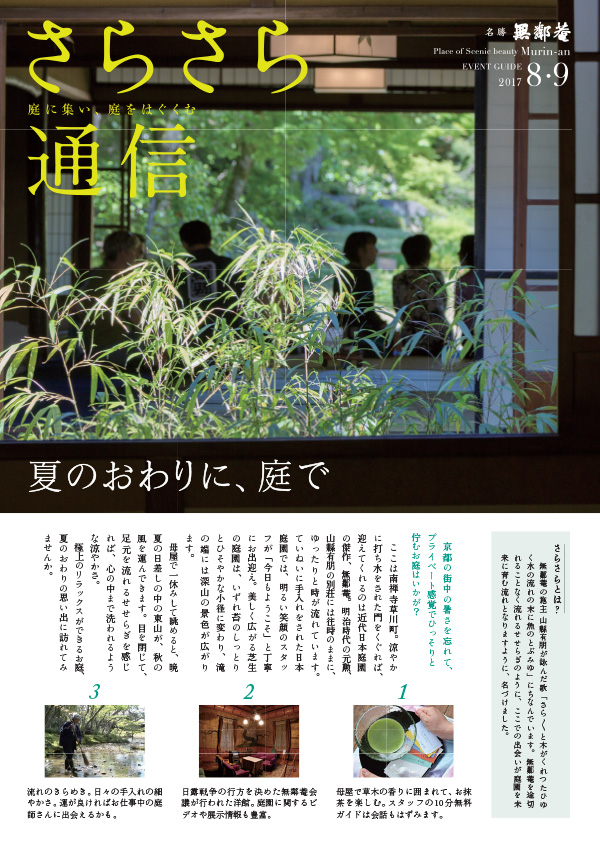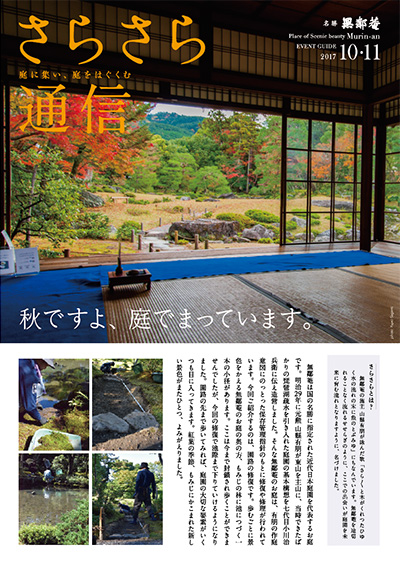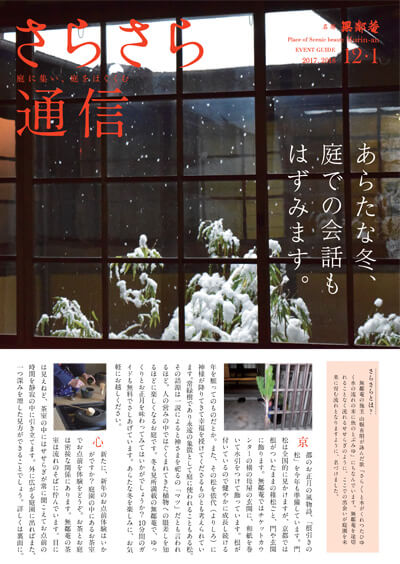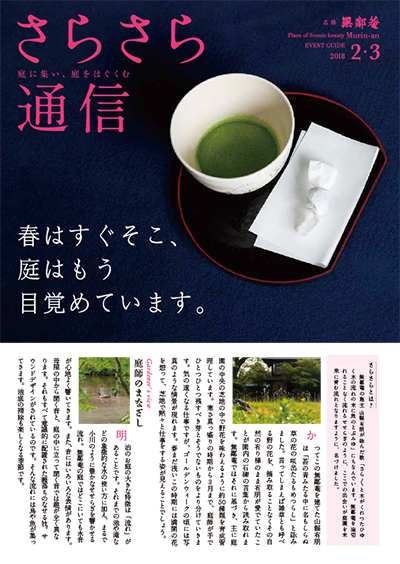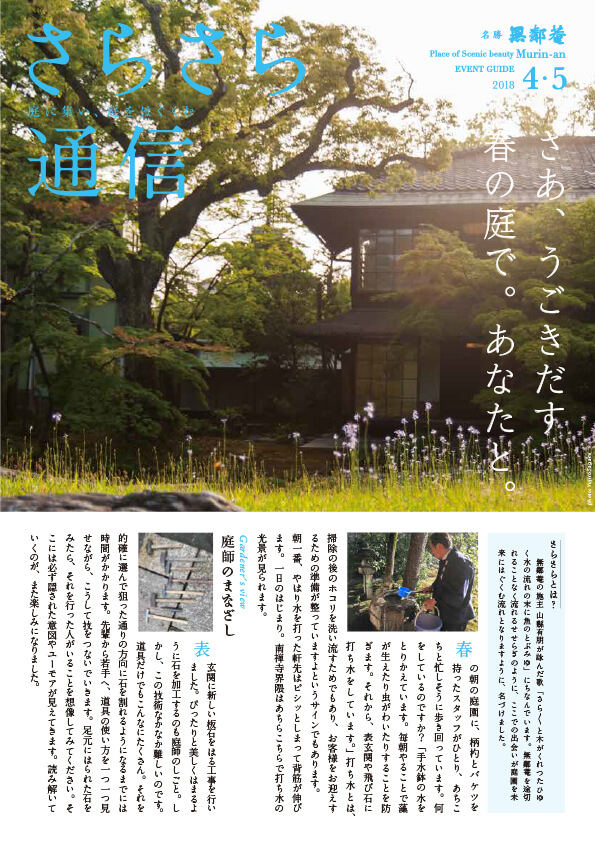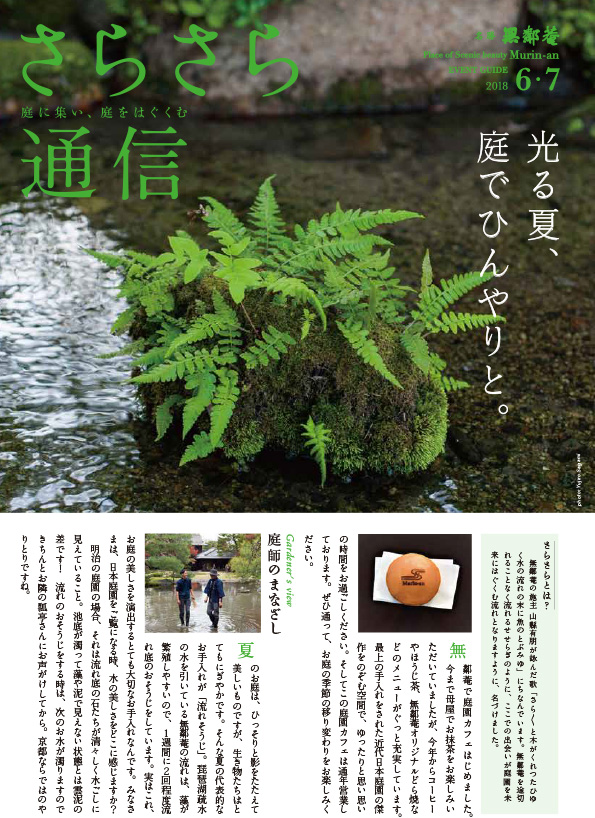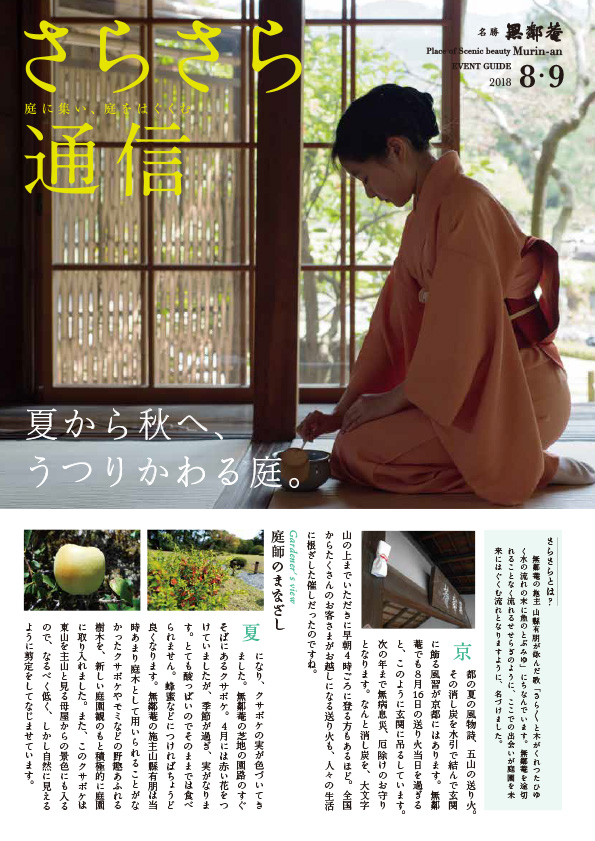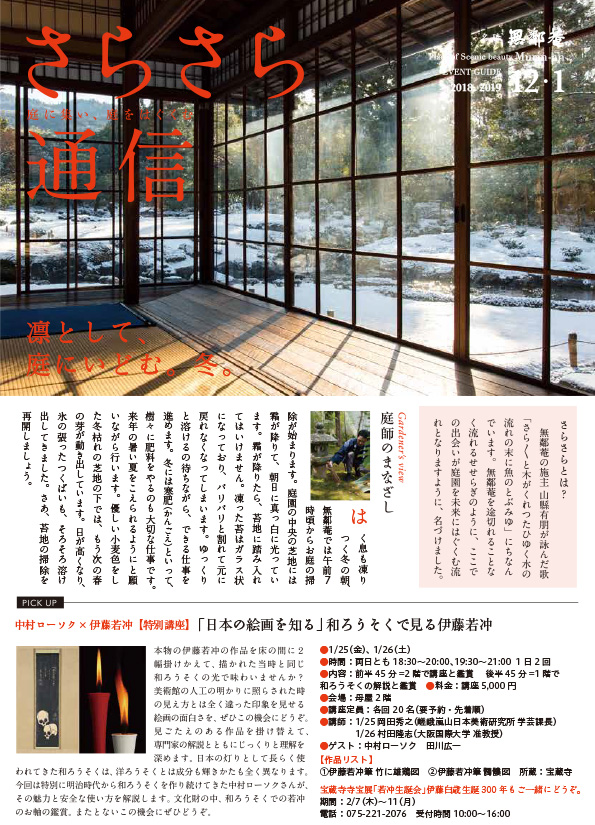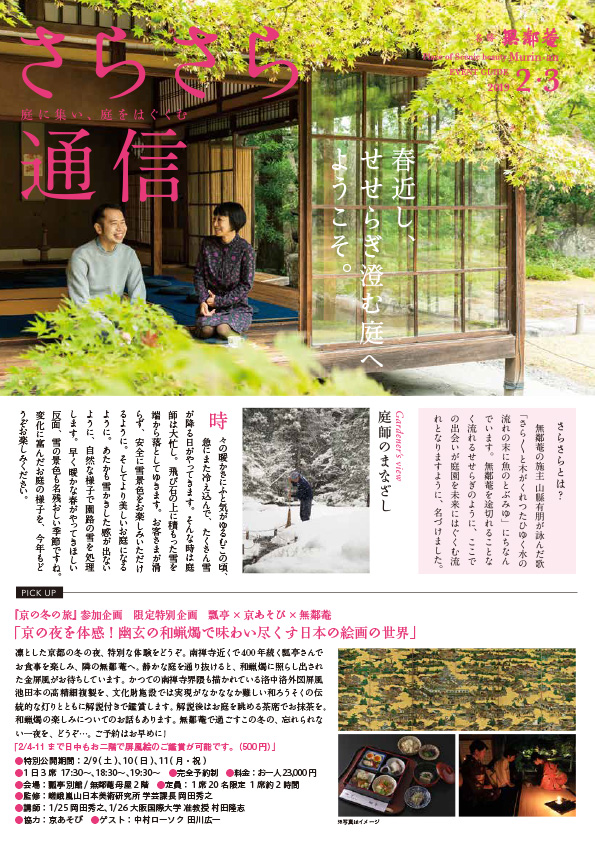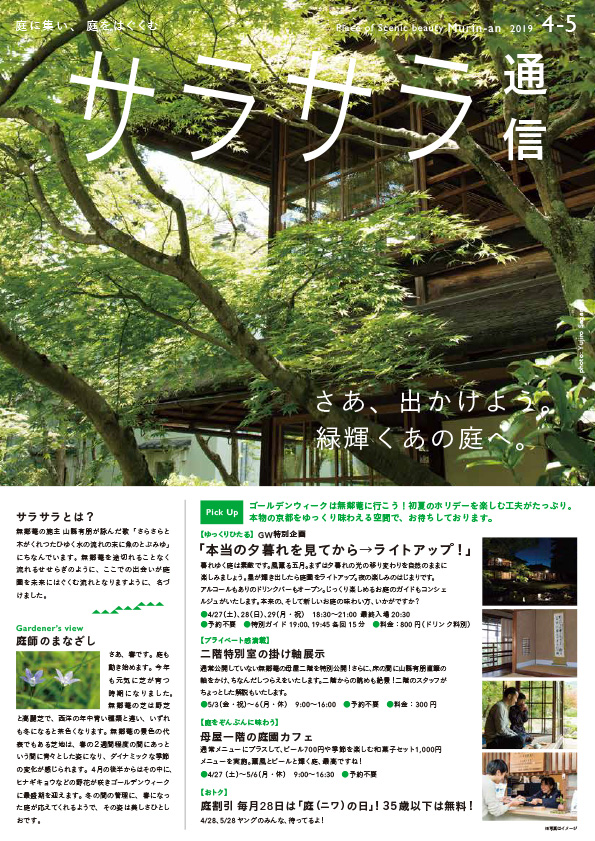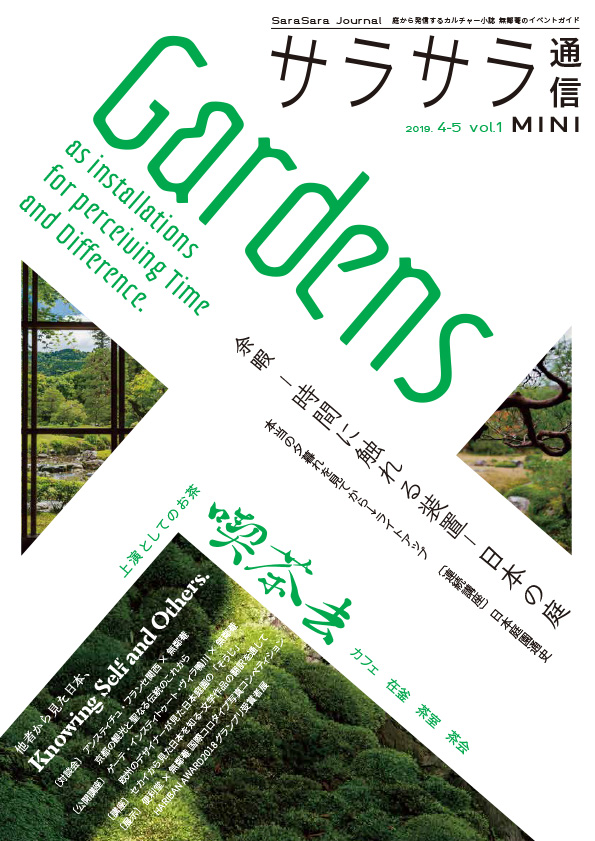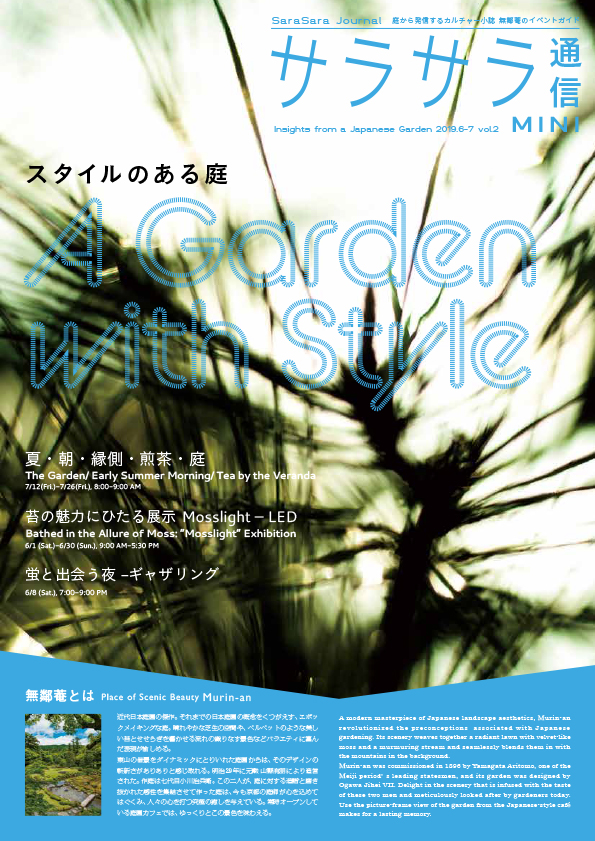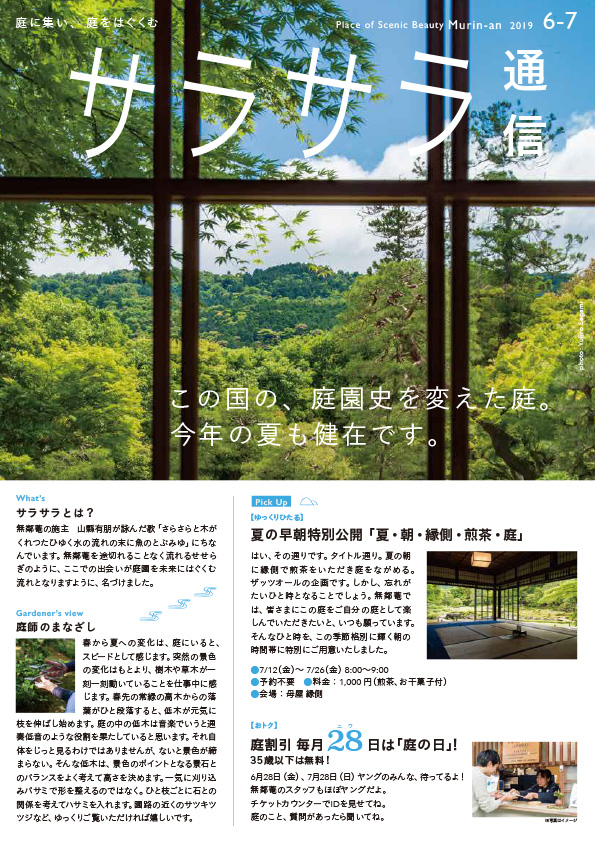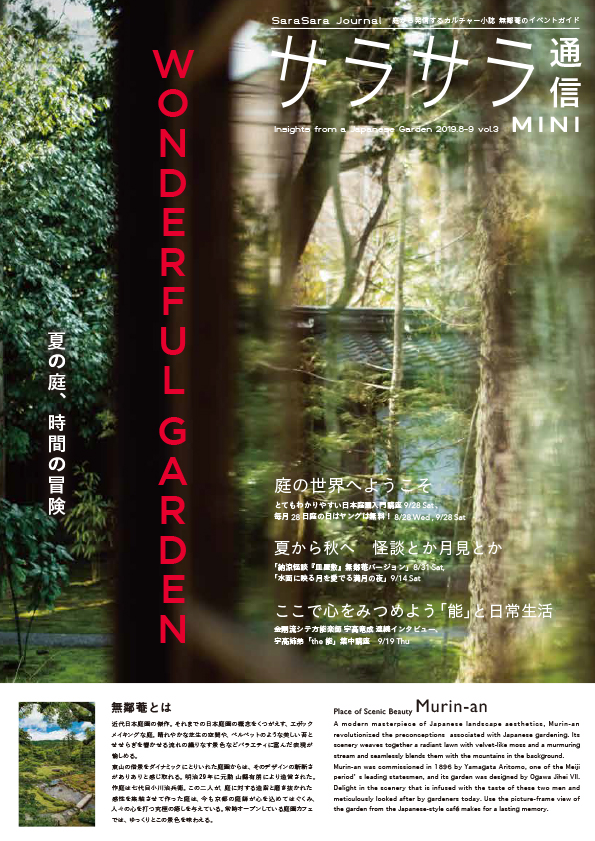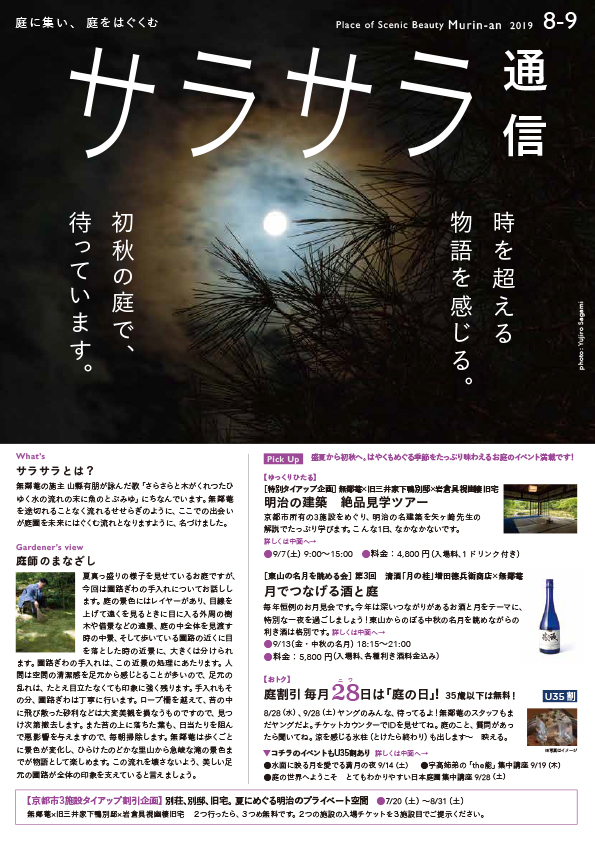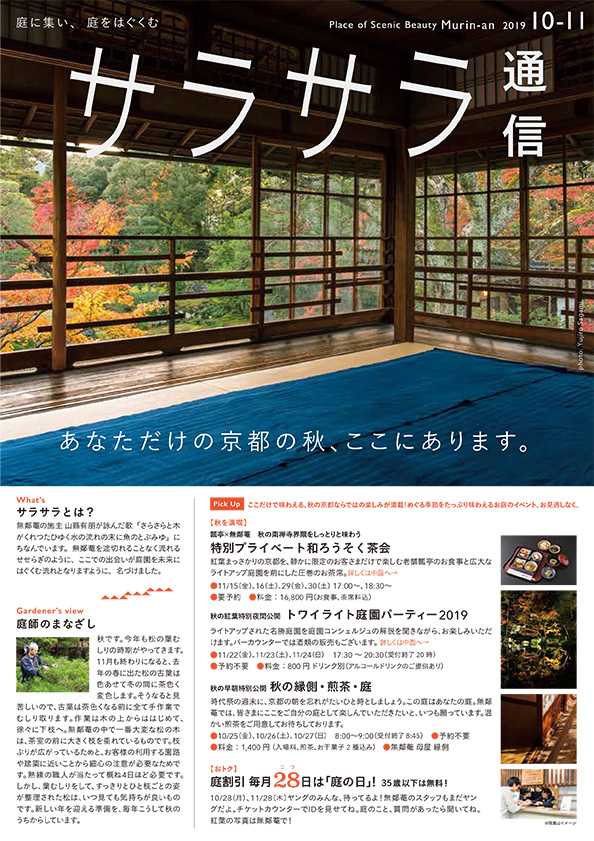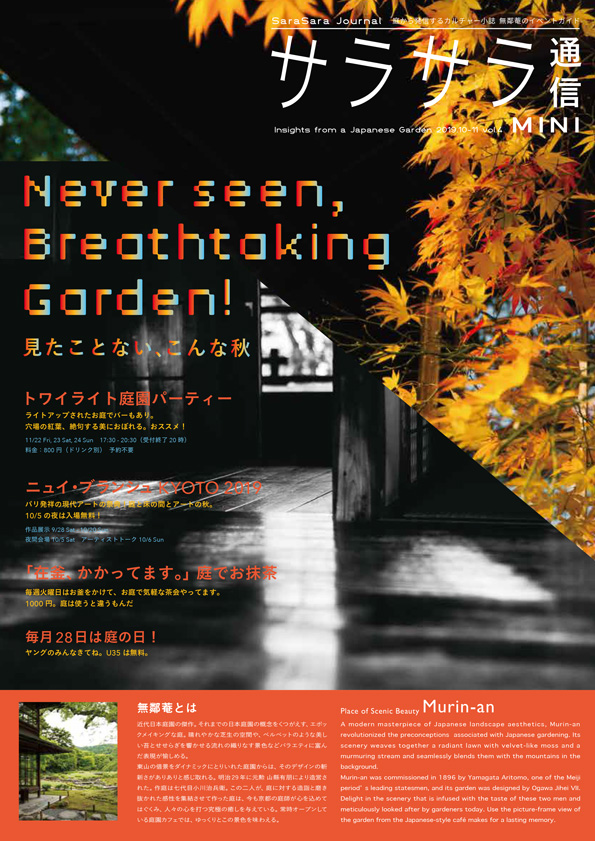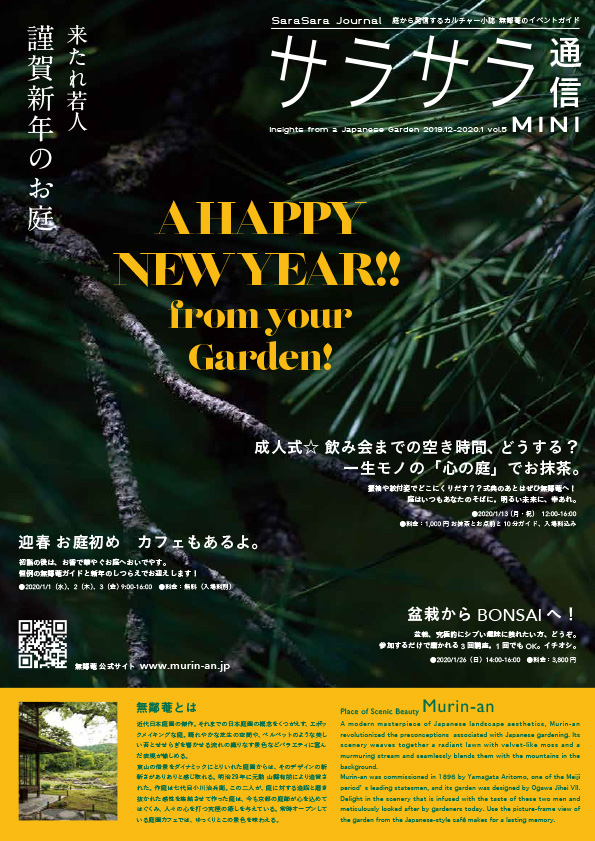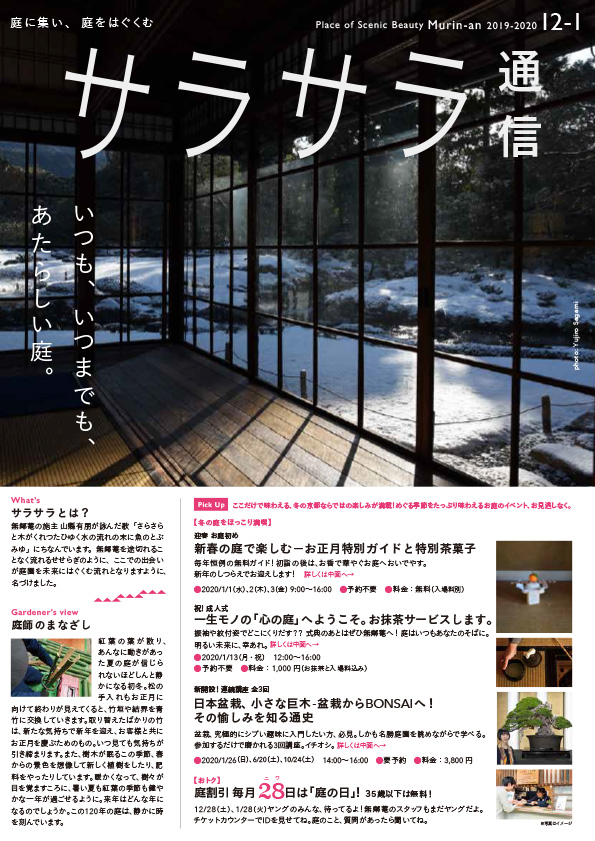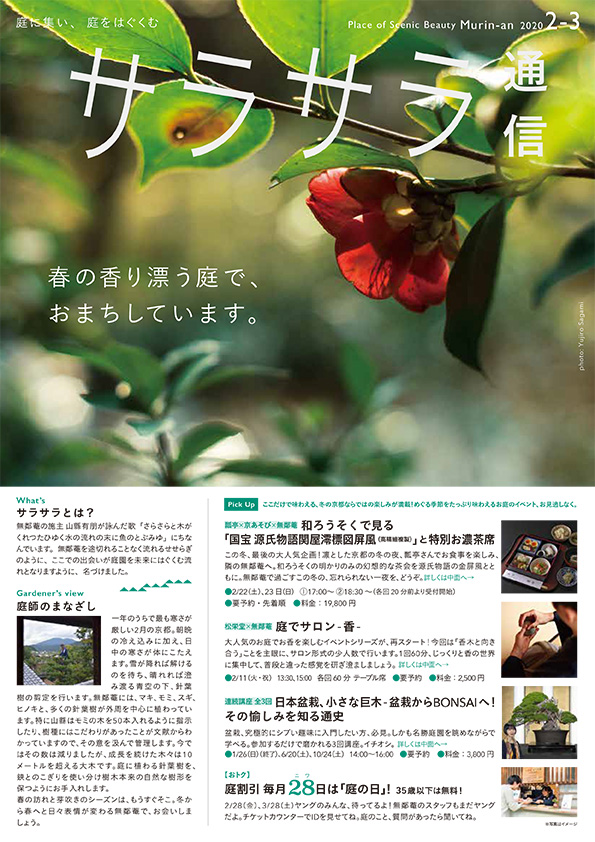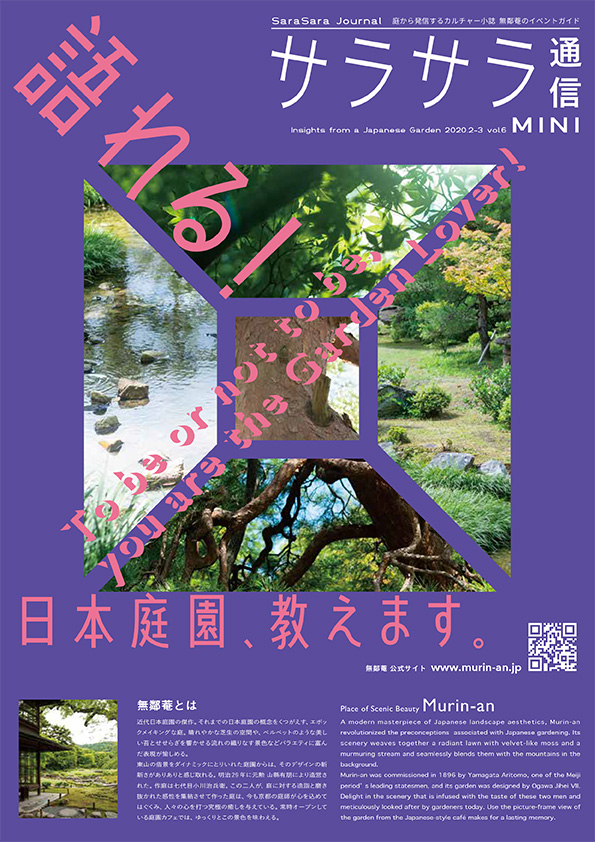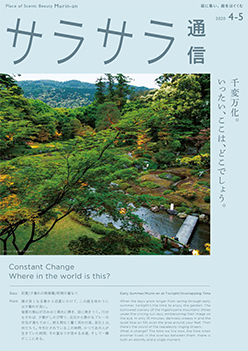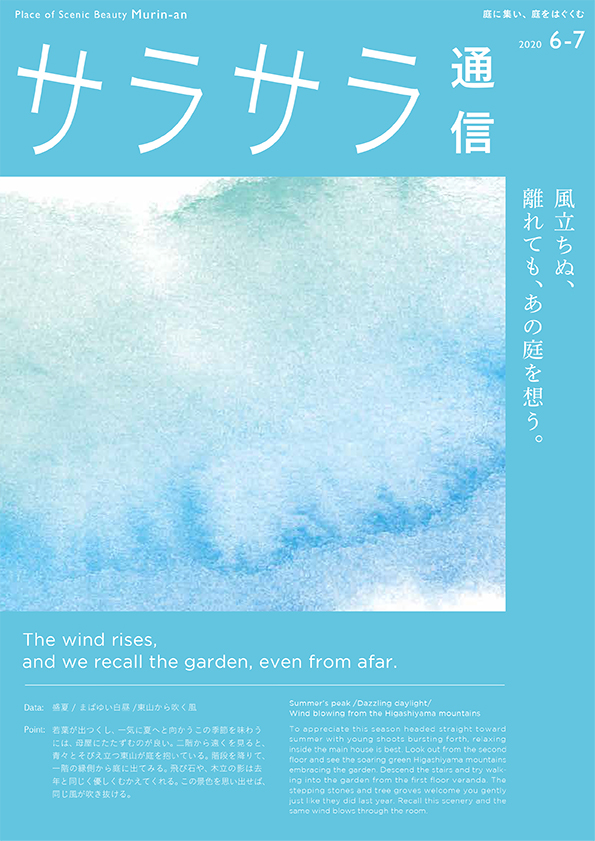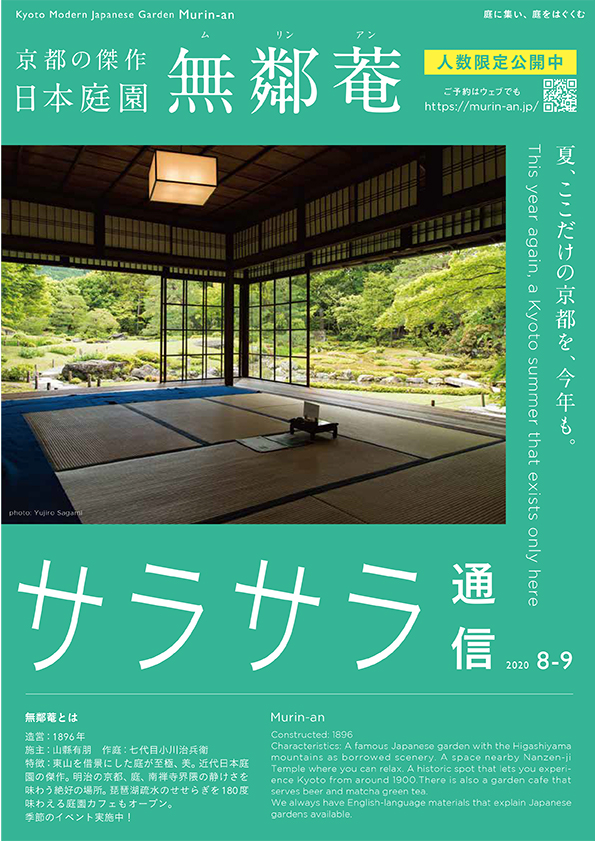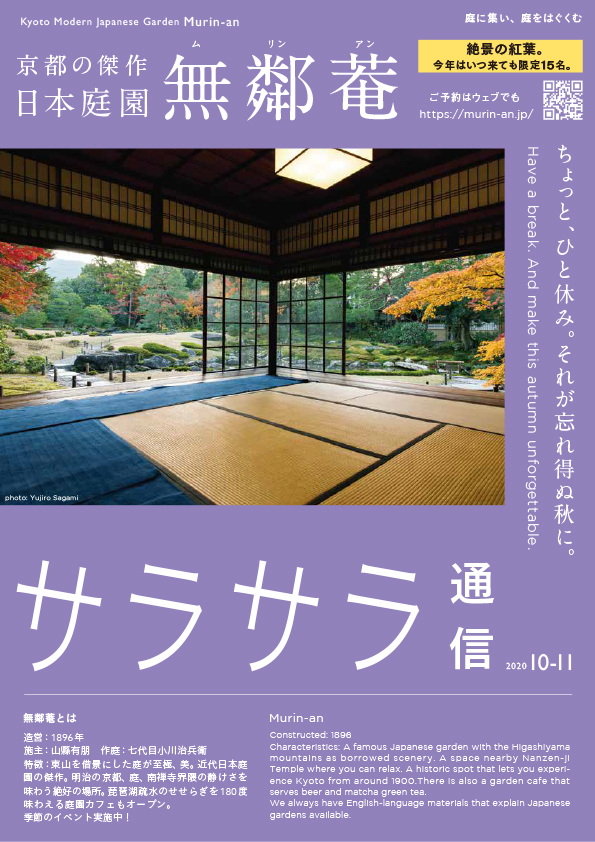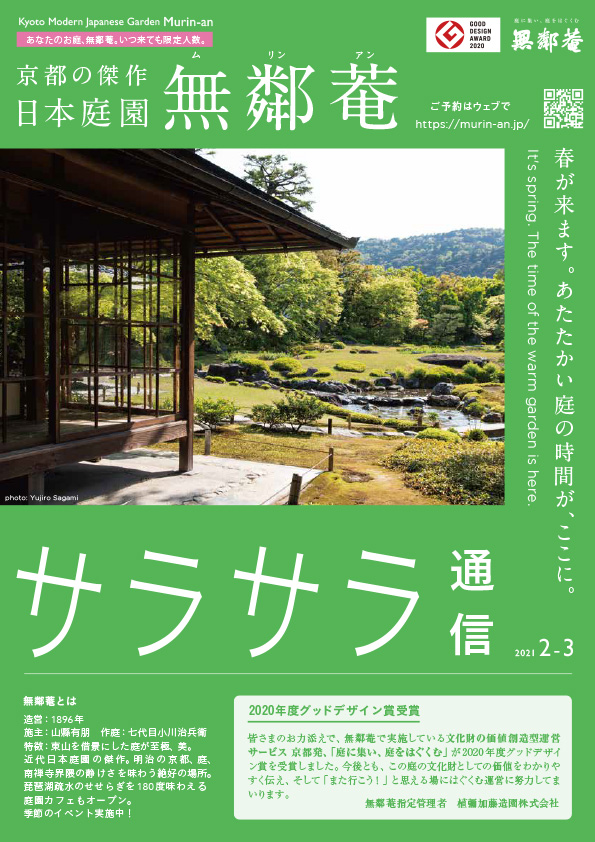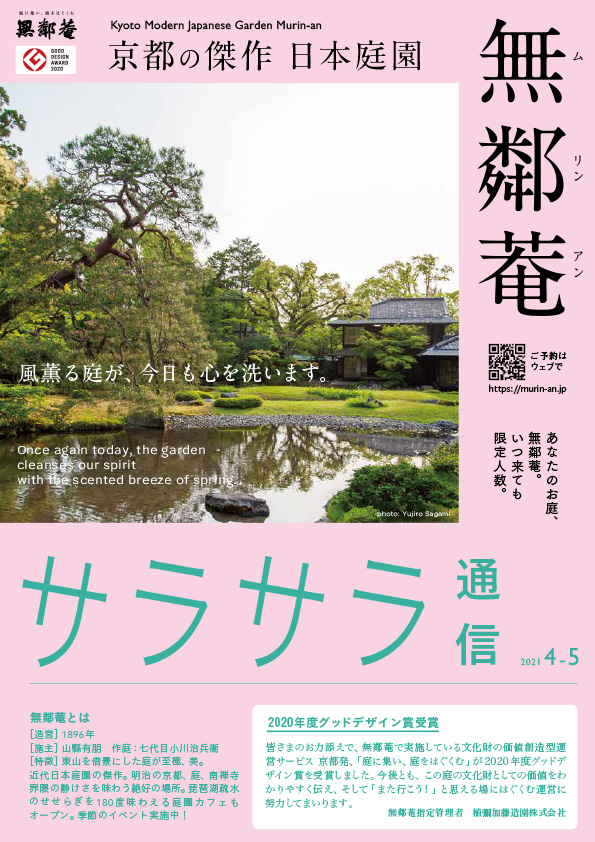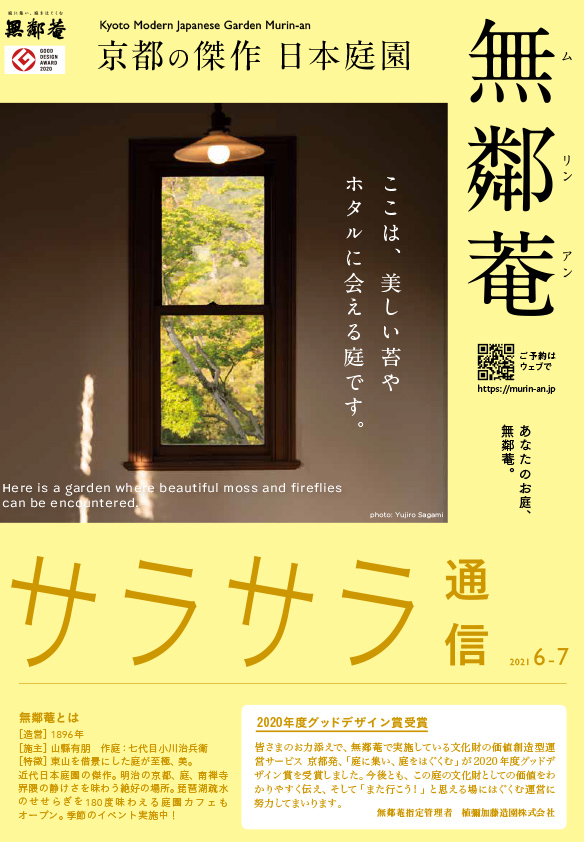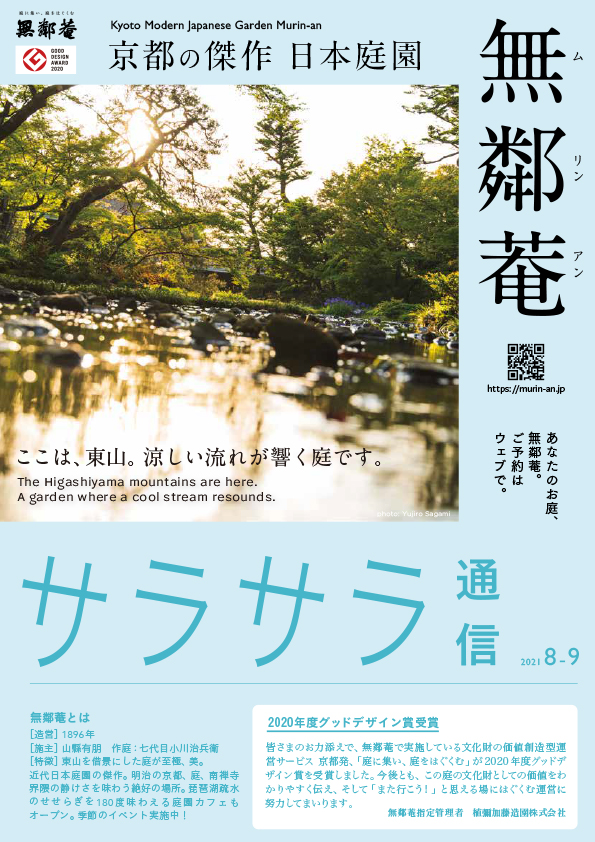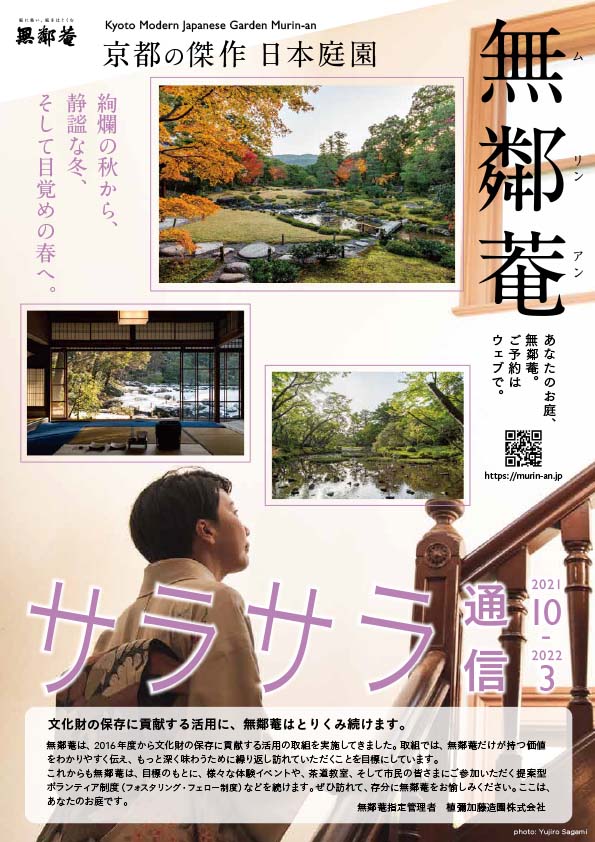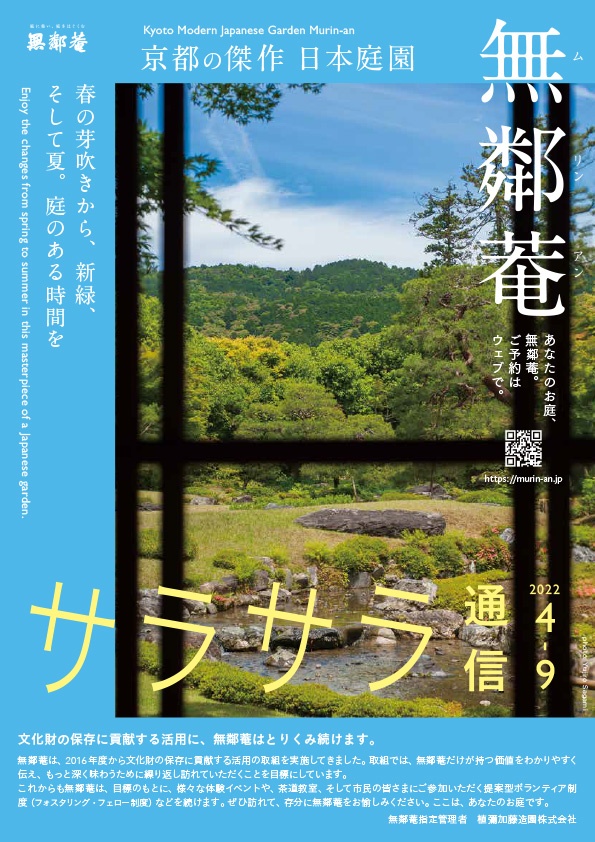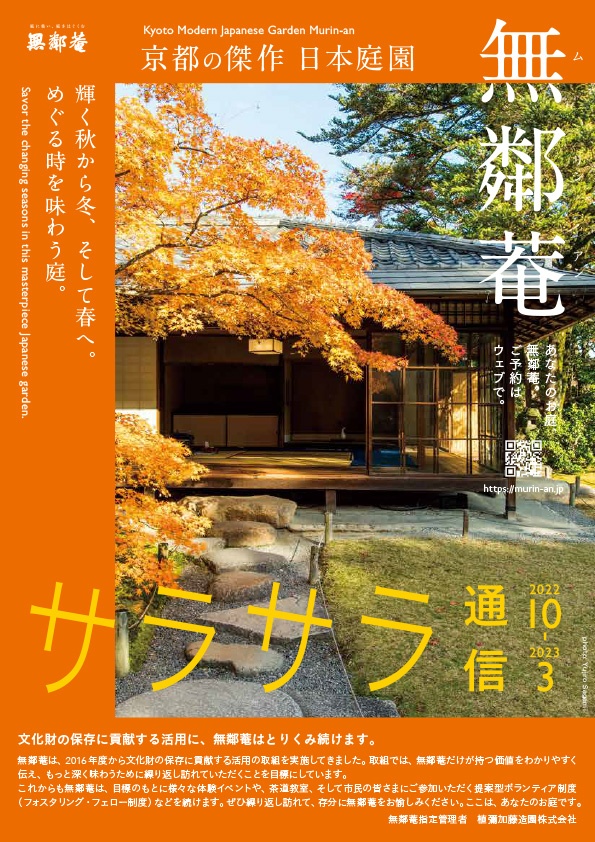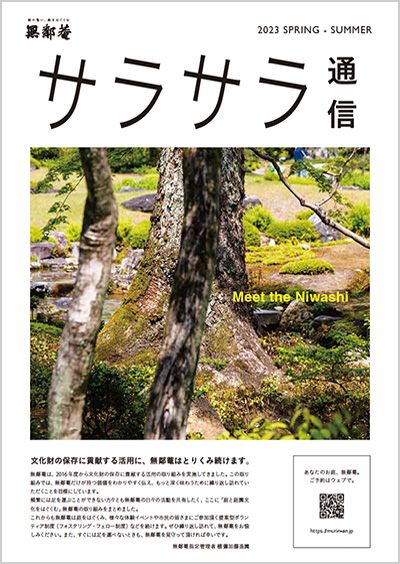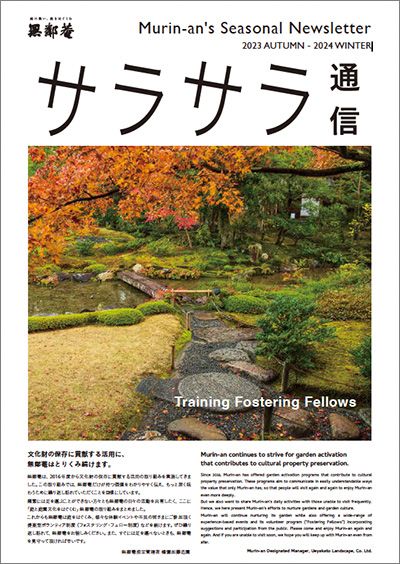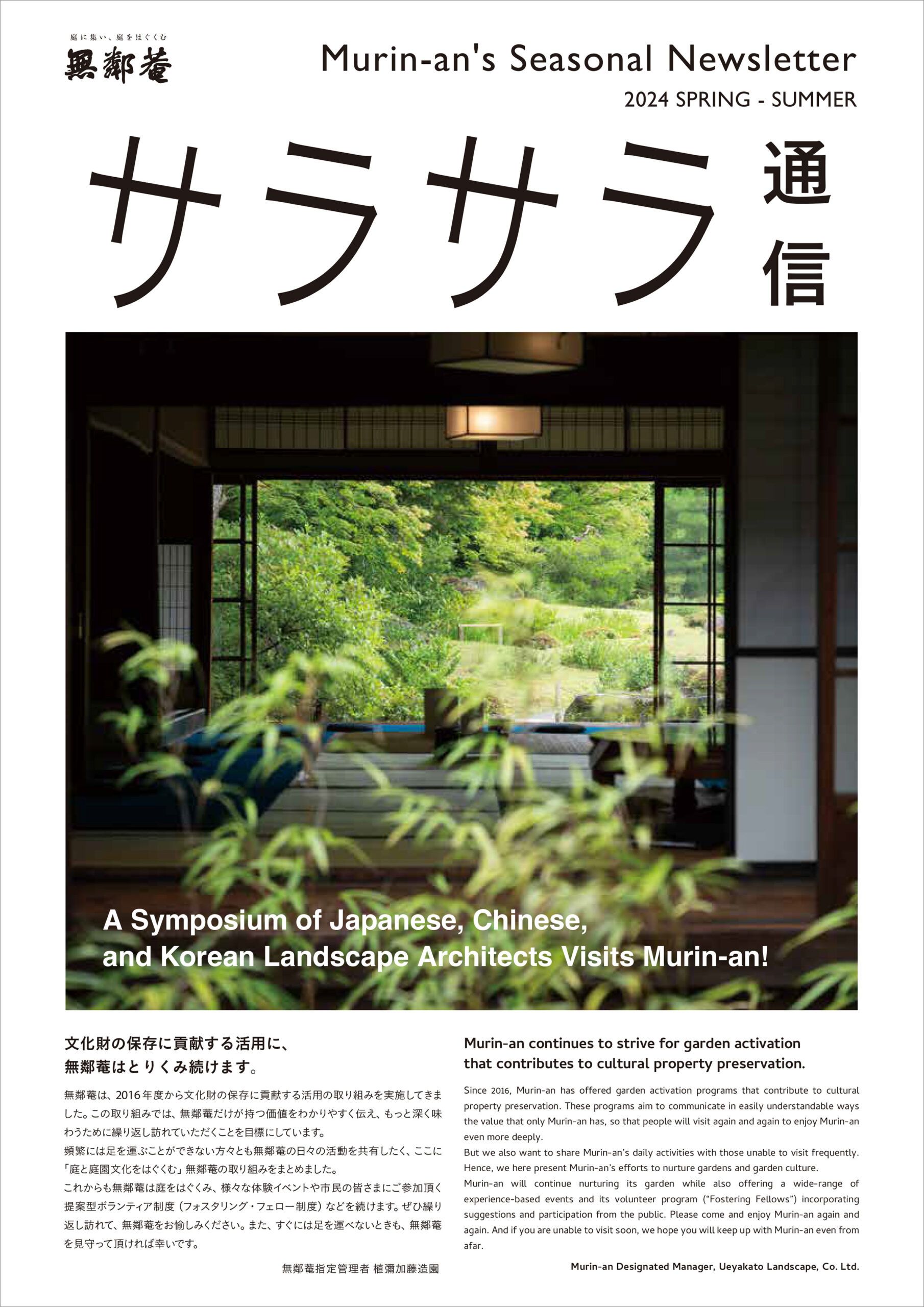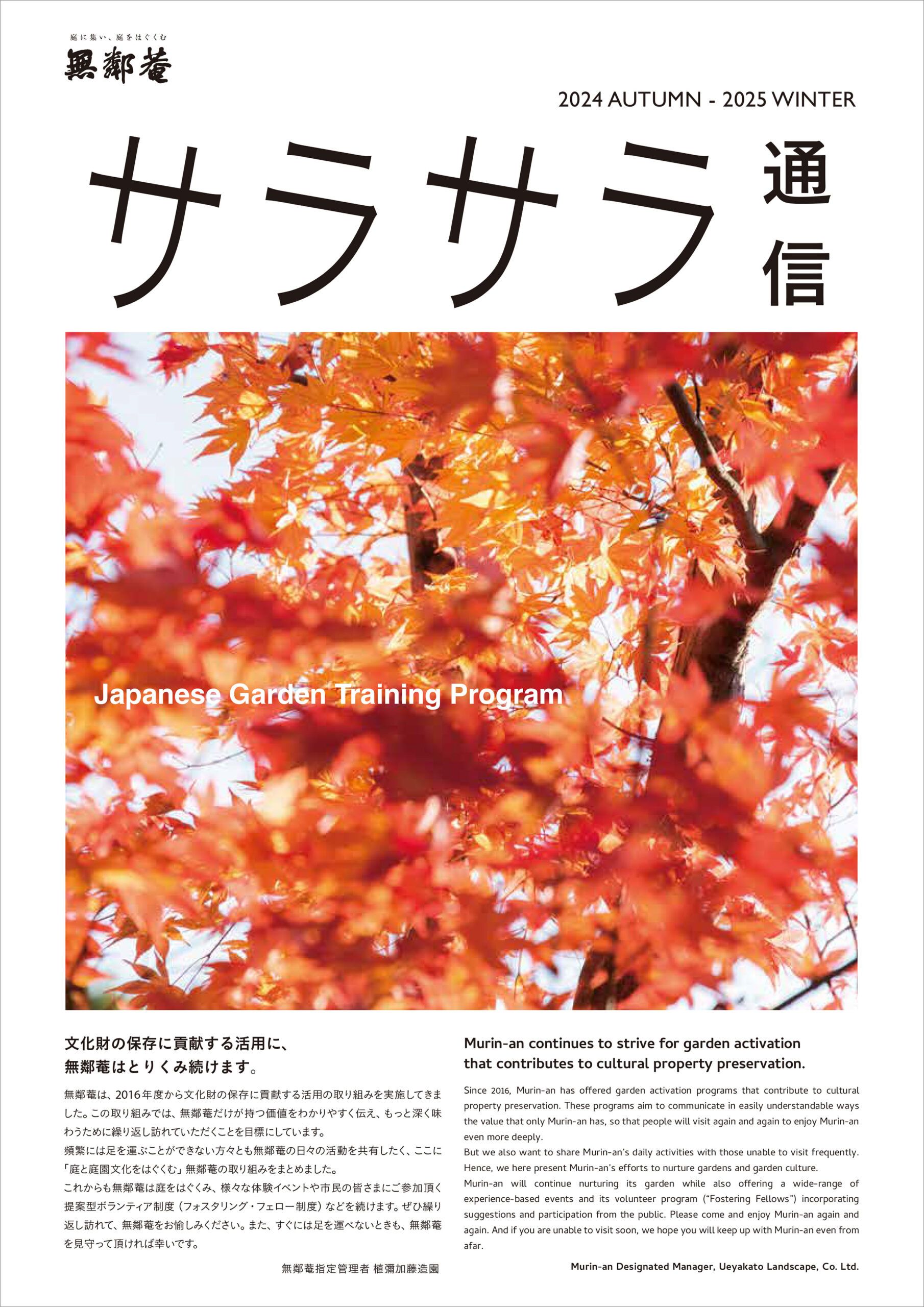Murin-an Periodical
This is the information program of Murin-an Garden.
It provides information on Japanese gardens, invitations to events that help foster the garden and seasonal highlights.
The name of this periodical is Sara-Sara News.
What does “sara-sara” mean? In Japanese, this word is used to evoke a gentle rustle or murmuring sound in nature. We have adopted it from a passage in a poem by Yamagata Aritomo, Murin-an’s original owner. It reads
At the end of a water stream/That murmurs gently as it travels hidden beneath the shade of trees/I see a fish leap
We chose this publication’s title to reflect our hope that, like the ceaseless flow of the murmuring brook flowing around Murin-an, the encounters here will produce a current toward nurturing Japanese gardens for the future.
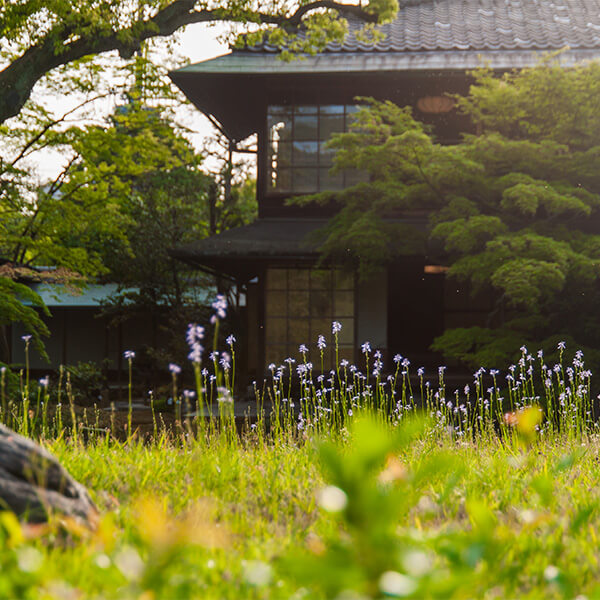
Feb-Mar 2018 Issue
The man who built Murin-an, Yamagata Aritomo, once waxed poetically that “its flowers whose names I do not even know, that grow amid the lush green moss, are also a delight.” We can also tell from the words on the garden’s memorial stone how much Yamagata cherished these wildflowers, which others might simply refer to as weeds, and left them in their natural state rather than picking them. Based on this knowledge, at Murin-an, we foster approximately fifty varieties of wildflowers, mainly on the garden’s central lawn where they can be fully appreciated. From the dead of winter through March, our gardeners pick apart one by one the buds that should be preserved from those that should not. It is a grueling task, but come Golden Week (Japan’s week-long holiday during the first week of May), a picturesque landscape appears. In this very early period of spring, you can see the gardeners silently working on the lawn as they dream about the wildflowers in full bloom.
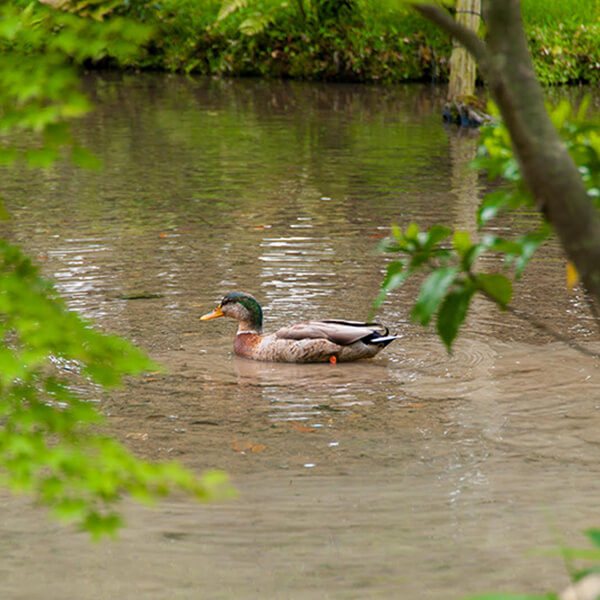
Gardener’s View
Water streams are a major characteristic of gardens from the Meiji period (1868-1912). Not only do they serve a symbolic function, but they also have a rich warble resembling that of a brook in nature. At Murin-an, you can hear the pleasant sound of water ringing out from wherever you are in the garden. The sounds also have many different expressions. The sounds you hear from inside Murin-an’s main house are entirely different from those heard in the garden. Each of these different sounds is produced through the technique of consciously placing cascade stones. Now that’s sound design. Birds and fish flock to streams like this one. This is a season where even cleaning the pond floor becomes a pleasure.
